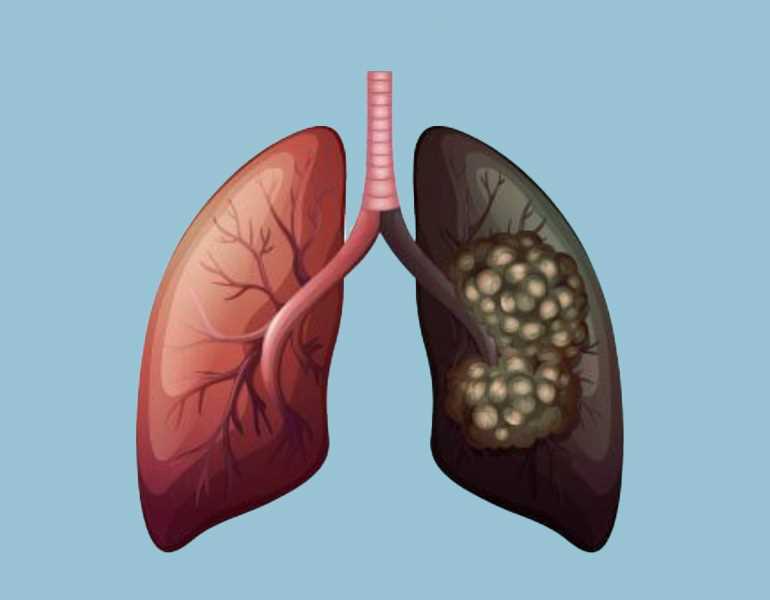By Agbai Sharonjoyce
Generally, lung cancer is considered a smoker’s disease, but here is a startling truth: up to 25% of all new lung cancer cases diagnosed globally are in people who have never touched a cigarette.
It is a rapidly growing concern that has made lung cancer a leading cause of cancer-related death even among non-smokers worldwide.
If smoking isn’t to blame, then what invisible threat is attacking their lungs? The answer is both simple and alarming: air pollution, especially the microscopic particles floating all around us. The World Health Organisation (WHO) classifies air pollution as a definitive human carcinogen—a substance known to cause cancer.
When scientists talk about pollution-related lung cancer in non-smokers, they often refer to Particulate Matter (PM)—a complex mix of tiny solid or liquid particles suspended in the air. The most dangerous type is PM2.5, or “fine particulate matter,” which measures less than 2.5 micrometers in diameter”
Because these particles are so small, they can travel deep into the lungs, reaching the delicate air sacs (alveoli) and even entering the bloodstream.
The risk of lung cancer in non-smokers rises with the level and duration of exposure—a dose-dependent relationship. Globally, PM2.5 pollution was estimated to have contributed to 14.1% of all lung cancer deaths in 2017.
How pollution causes lung cancer
PM2.5 carries toxic materials like heavy metals, nitrates, sulphates and polycyclic aromatic hydrocarbons (PAHs). Once inhaled, these substances trigger the production of reactive oxygen species (ROS)—unstable molecules that cause oxidative stress.
Excessive oxidative stress disrupts the body’s natural defences, leading to chronic inflammation in lung tissue.
Over time, this inflammation causes DNA damage and genetic mutations, which can transform healthy cells into cancerous ones. This process is particularly linked to a type of lung cancer known as adenocarcinoma, which is more common among non-smokers.
You might think staying indoors protects you, but that’s not always the case. Humans spend 80–90% of their time indoors, where air pollution can be even more concentrated than outside.
For many non-smokers—especially women—cooking fumes are a major risk factor. Studies show a strong link between exposure to cooking fumes and lung cancer in non-smoking women. High-temperature cooking methods such as deep-frying or stir-frying release mutagenic compounds, including PAHs and aldehydes.
Using solid fuels like wood, coal, or crop residue for cooking or heating without proper ventilation releases dangerous levels of PM2.5 and toxic gases.
Another invisible hazard is radon gas, which seeps from the ground into poorly ventilated homes and is a proven carcinogen. Even secondhand smoke indoors remains a significant risk, particularly for non-smoking women.
How to reduce the risk
When cooking, use your fume extractor hood diligently. Studies suggest that proper use of ventilation can have a protective effect and significantly reduce the risk of lung cancer caused by cooking fumes, ensure you are ventilating indoor areas overall to reduce pollutants like radon.
Consider lower-emission cooking methods like steaming or boiling over high-temperature frying techniques when possible.
Also, choose healthier oils with higher smoke points and avoid reusing frying oil. Promoting clean energy sources like natural gas and electricity over solid fuels reduces harmful airborne pollutants in the home—avoid outdoor activities when air quality is poor.
Ultimately, preventing these cancers requires public health efforts, including constant monitoring of hazardous particulate matter levels, enforcing strict regulations on industrial and traffic sources and developing individualised health strategies based on factors like gender and genetic background.
Understanding that air pollution is a major driver of lung cancer—especially among those who have never smoked—should change how we approach prevention.
The fight isn’t just against the disease but against the environmental conditions that fuel it. By improving air quality both outdoors and indoors, we can take a powerful step toward protecting future generations from this silent killer.
Summary not available at this time.






